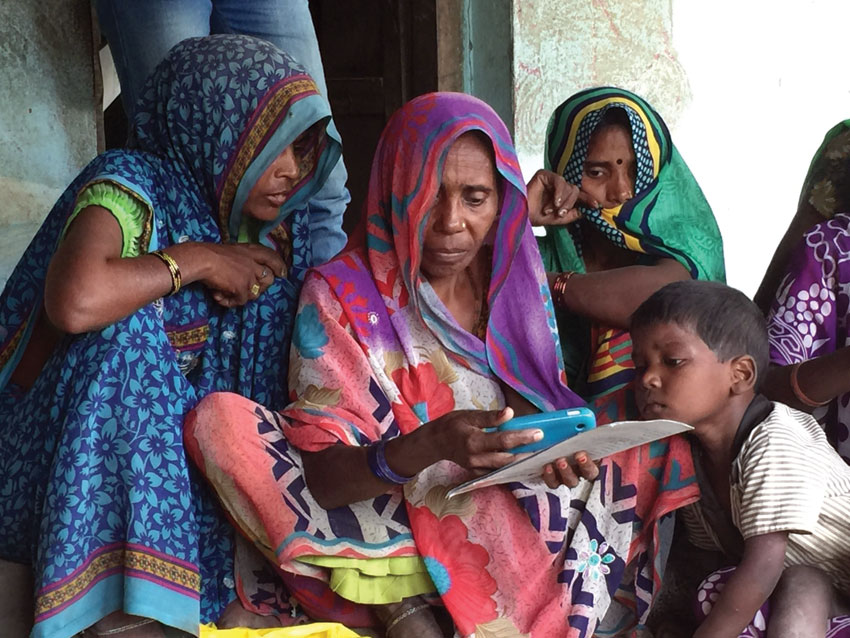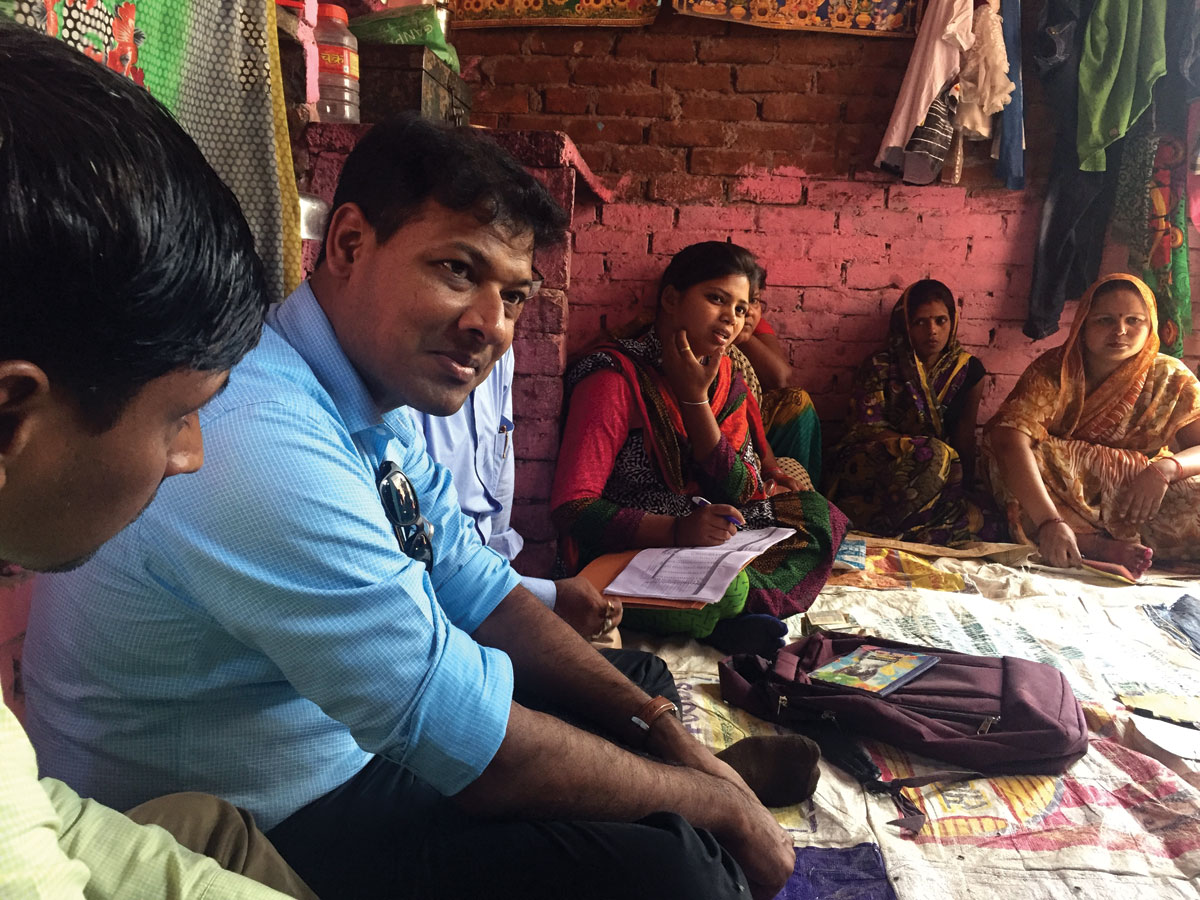Building Trust: Transforming India Poorest Communities Through Technology
Prabhat Labh meeting with clients of Sonata Finance in Uttar Pradesh. (Photo courtesy: Grameen Foundation India)
Digital technology can transform India if we harness the insights and earn the trust of communities to develop solutions that build their capabilities and empower them, writes Prabhat Labh, CEO of Grameen Foundation India.
On a morning of dazzling blue sky, outside a rural village in Rajasthan, I welcomed farmers who had brought their goats for vaccination. Soon, hundreds of farmers were lined up, their goats butting heads as they nosed the hilly terrain for specs of grass. But the vaccinators didn’t show up. Only a handful of extension staff, myself included, were there to face the farmers. We had convinced them to come from miles around, by foot, with their animals. How could we turn them away? What would happen to the trust we had built, the foundation of all the progress we hoped to achieve?
Two decades later, this lesson has stayed with me as I have worked in more than 20 countries to help rural people improve their livelihoods and health. Now, I am back in India, and the same question arises: how do we build and maintain the trust of the people we aim to help?
My father was a veterinarian, and I grew up in a similar village in Bihar, watching him vaccinate goats, sheep and cows. I and other colleagues present believed we could—and must—do the job ourselves, without the animal husbandry specialists. Soon, we were paired up, one gripping each struggling goat, the other injecting the vaccine. By the day’s end, we were drenched in sweat and covered in dirt, and every last animal had gotten its shot. The farmers thanked us as they headed home.
Today, I work as Chief Executive Officer of Grameen Foundation India, and building community trust is central to our work. Much of it focuses on bringing financial services to the rural poor, especially women, through the use of digital technology. These services include safe ways to save money, take out and repay loans—often used to buy a cow or goat for supplementary income and nutrition.
Such services, delivered digitally offer enormous potential benefits to India’s rural poor, who live largely outside the formal financial system. But technology alone cannot bridge this gap. In recent years millions of people have opened bank accounts, but only a fraction are used.
Bridging the digital divide and empowering people with financial services requires fully understanding their needs, developing products that meet those needs, and training people in digital and financial literacy so they can take full advantage of the new services. All of this takes trust, which can only be built person to person.

That is why our work combines the use of technology and field agent networks operated by microfinance organizations, women’s self-help organizations, banks, government agencies and other partner organizations. We equip these organizations and their field agents to better serve rural clientele. Most often, those clients are women, often illiterate, rarely versed in digital technology or in the basics of finance, and living on less than $2.50 a day.
The impact has been tangible. Our work with Sonata has allowed this microfinance institution in Uttar Pradesh to bring its customers deep in rural areas to the digital payment platform. The program enables clients to repay loans via Aadhaar-enabled payment system using just a fingerprint for authentication —making financial services accessible to women. Switching to digital payments is also helping Sonata manage its cash flow, and we trained the clients on the new system and then developed a mobile app that Sonata’s frontline staff use to train new clients. The combination of human interface and technology helps build trust while ensuring optimum efficiency and convenience.
In India, we also partner with Freedom from Hunger India Trust. In Rajasthan, we worked with local partners Pradhan and Vaagdhara to train 1,250 rural women as community nutrition agents (CNAs) to educate fellow villagers on nutrition, hygiene and facilitated their access to the government health system. In two years, they reached 30,000 women and family members. Food security, dietary diversity, and basic health practices all improved significantly. The number of women reporting that they were food secure increased from 21 to 52 percent. Now we can build on that success, including through adopting digital tools to train CNAs and women.
Agriculture is the primary source of income for more than 600 million people, yet they generate only 12 percent of India’s GDP. More than 200 million poor people are struggling to make ends meet. There is huge opportunity to bring digital innovations in agriculture more directly to our work in India.
Outside of India, Grameen Foundation (a global entity) has worked with coconut farmers in the Philippines, cacao farmers in Indonesia, coffee and vegetable farmers in Colombia and Uganda, to improve their yields, access to finance, and connections with markets. Field agents use our FarmerLink mobile apps to gather rich, real-time data on farmers. This data is used to provide farmers with customized support, developing farm management plans to make their farms more sustainable and productive. Equally important, farmers receive alerts regarding extreme weather and crop pest outbreaks; agronomic advice; and financial advice via text messages.
The opportunity for promoting change through digital technology in India is huge. Each one of the billion mobile phones in our country can be used as a conduit for vital information and services. But to fully address the challenges facing India’s underserved communities, solutions must be informed by the people we seek to serve, as we gain their trust, build their capabilities, and empower them to change their lives.
Learn more at grameenfoundation.in


